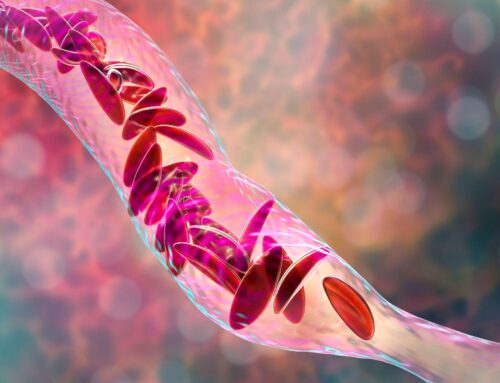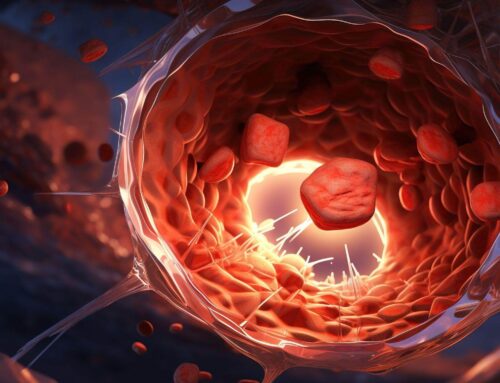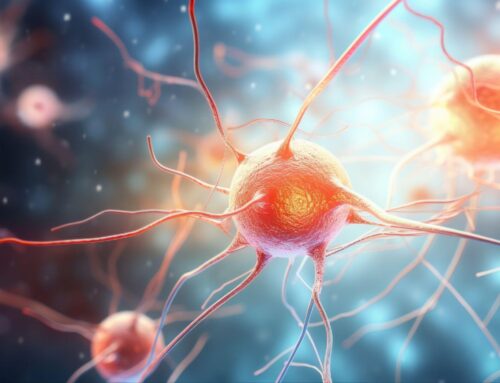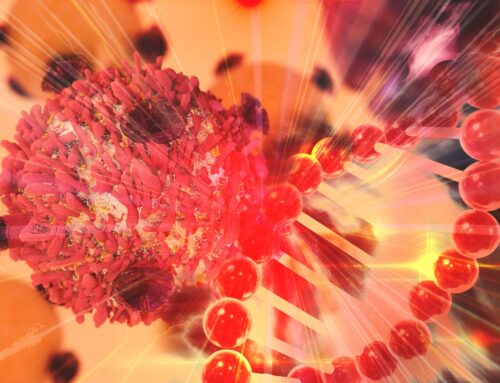Looking for something?
20th Anniversary of RNA Interference in Mammalian Cells
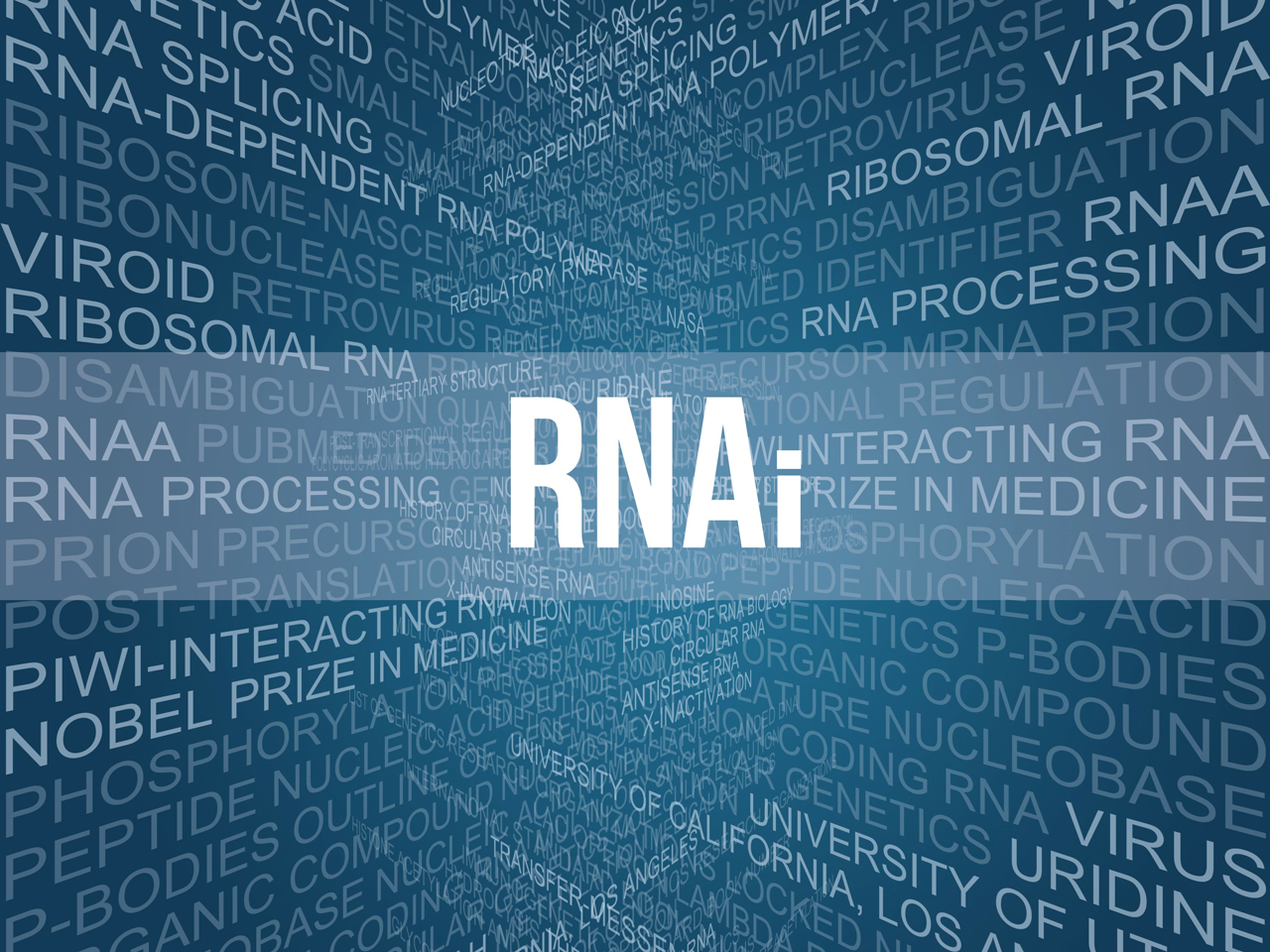
The groundbreaking discovery of RNA interference by Craig Mello and Andrew Fire was swiftly followed by the discovery of RNAi as a gene-silencing mechanism in mammalian cells. Since these breakthroughs, members of our community have devoted their lives to building on these exciting discoveries, and together we are producing results that greatly improve the quality of people’s lives. In upcoming months we will highlight and discuss in greater depth various types of RNAi strategies, but first, we want to celebrate some of the important work and milestones achieved in the past 20 years.
Major Milestones
In 1998, Andrew Fire and Craig Mello published their discovery of RNA interference in the nematode worm, Caenorhabditis elegans, for which they later shared the 2006 Nobel Prize in Physiology or Medicine (1). Then, in 2001, the “celebrated proof-of-principle experiment demonstrating that synthetic small interfering RNA (siRNA) could achieve sequence-specific gene knockdown in a mammalian cell line (2)” was published by Elbashir and colleagues (3). These developments initiated the race to find RNAi-based technologies.
Injection of Fas siRNAs protected mice from autoimmune hepatitis in 2002 and demonstrated the potential of siRNA therapeutics in suppressing gene expression (4). Within a few years, clinical trials began and were swiftly followed by in-human clinical trials. Although many critical issues arose, advanced clinical trials failed, and big Pharma withdrew, our community continued to pursue RNAi-based drugs and the perseverance has resulted in the recent approval of life-saving drugs.
One incredible benefit of RNAi-based drugs is that, unlike traditional medicines which treat a condition after damage has been done in the body, RNAi drugs address the underlying mechanism and prevent the damage from occurring in the first place. A few RNAi drugs have now been approved for use in various countries and are improving the health and quality of life for thousands of individuals who previously had no hope of a therapy.
Onpattro (patisiran) is the first siRNA-based drug approved by the FDA. It received approval on August 10, 2018, to treat polyneuropathy (nerve damage) in people with hereditary transthyretin-mediated amyloidosis (hATTR), which affects approximately 50,000 people worldwide. hATTR is a physically debilitating disease that often leads to death within a few years and Onpattro is the first drug approved to treat the condition. The phase 3 APOLLO study showed that patients who received patisiran benefited from improved function and improved quality of life (6).
Givlaari (givosiran) received FDA approval on November 20, 2019. It is for the treatment of adults with acute hepatic porphyria (AHP), a rare genetic disorder resulting in the buildup of toxic porphyrin molecules. People with AHP endure potentially life-threatening attacks and some experience chronic debilitating symptoms that negatively impact daily functioning and quality of life. Givlaari is a siRNA-based drug that is a first-in-class medication. People who receive Givlaari have significantly fewer attacks and lower pain (7).
In November 2020, Oxlumo (lumasiran) received FDA approval and approval in the EU. It is the first treatment for primary hyperoxaluria type 1 (PH1), a rare genetic disorder, which affects an estimated one to three individuals per million in North America and Europe. PH1 causes the production of far too much oxalate, which can combine with calcium, causing kidney stones and deposits in the kidneys. This may lead to progressive kidney damage, followed by kidney failure and the need for dialysis. Oxalate can build up and damage other organs, including the heart, bones, and eyes. Oxlumo works to decrease oxalate production. After six months of treatment, 84% of patients who received lumasiran had normal or near-normal levels of urinary oxalate (8).
Leqvio (inclisiran) is a medication that treats people with heterozygous familial hypercholesterolemia (HeFH). HeFH is a genetic condition that causes elevated LDL cholesterol, which often does not respond to other lowering medications. “Among adults with heterozygous familial hypercholesterolemia, those who received inclisiran had significantly lower levels of LDL cholesterol than those who received placebo” and it was effective in people whose LDL levels did not respond to other medications (9). Since elevated LDL can cause a heart attack or stroke, inclisiran is undoubtedly a life-saving treatment. It was approved by European Union in Dec. 2020.
The FDA approved Spinraza (nusinersen) on December 23, 2016. Although Spinraza is an ASO-based method, ASOs and RNAi share their fundamental principle, so progress in the development of one method often allows for progress in both. Its approval was a significant milestone in oligonucleotide therapeutics, as it is the first drug to treat spinal muscular atrophy (SMA), which causes muscle weakness and is the number one cause of infant mortality. Those who live past age two generally have difficulty walking. Before Spinraza was approved, treatment for SMA merely consisted of managing symptoms, respiratory support, and prevention of complications. With Spinraza, children are achieving significant improvement in reaching motor milestones that they would not if left untreated. Perhaps even more spectacular is the fact that some infants who are treated before displaying symptoms achieve motor milestones that may correspond to normal motor development (5).
Commitment to Developing the Potential of RNAi Brought About Many Important Achievements Over the Past Two Decades
The milestones mentioned above are worth celebrating, and yet, none of them would have been possible without decades of dedicated, consistent work that resulted in the achievement of many other accomplishments. These early successes built a foundation that enabled the creation of safe, effective drugs to improve quality of life for thousands of people that had previously not thought it possible. While it would be impossible to note every single achievement, we will mention just a few.
- Without effective delivery methods, RNAi would have very limited usefulness in the human body, since naked RNA is easily degraded in the bloodstream, stimulates the innate immune system, and is difficult to transport across the cell membrane. Effective delivery methods must not increase toxicity or induce immune response, while protecting the RNAi drugs from degrading or being cleared from the system, then must allow efficient endosomal escape into the cytosol (10). 1st and 2nd generation LPNs brought initial success, Onpattro being one shining example (11).
siRNA conjugates appear to be the future of delivery, “as conjugated siRNAs seem to be better tolerated than LNPs, are simpler and cheaper to manufacture, and can be administered subcutaneously” (11). “In early-phase clinical trials, GalNAc-conjugated siRNAs seem to provide robust knockdown. They also have several advantages — for instance, they can be given subcutaneously, appear to be better tolerated and do not require steroid pretreatment” (11).
Alnylam Pharmaceuticals developed proprietary siRNA modifications called enhanced stabilization chemistry (ESC), which improve gene knockdown potency by as much as 50-fold (12).
- Companies have invested in developing methods and tools for analysis. This is essential because analytics are important in understanding aspects such as chemical degradants and biological metabolites, and various platforms are necessary for different classes of oligos (13).
- The creation of siRNA and shRNA libraries allowed for large-scale RNAi screening that is providing incredible insights that contribute to the fight against cancer. Soumya Rajan et al. stated the significance perfectly, “Our ability to harness RNAi to study gene function represented a landmark achievement for the scientific community with immediate applicability across multiple biological contexts and disease phenotypes, especially cancer” (14).
“Improved RNAi‐effector design tools lead to the generation of siRNA or shRNA libraries initially targeting subsets of genes… These libraries progressed to become genome‐wide in scale, paving the way for functional genomic studies previously impossible in mammalian cells” (14). The improvements of RNAi technology’s capabilities allowed large screen studies across multiple cancer cell lines.
Global research efforts to optimize screens have led to significant breakthroughs in cancer research. For example, in 2006, RNAi screening to find synthetic lethal gene-drug interactions relevant to cancer treatment began. Researchers studied the effects of each siRNA alone or combined with gemcitabine, paclitaxel, or cisplatin. They found that silencing of specific genes significantly enhanced cisplatin activity (14, 15).
- Chemical modifications are another critical area in developing RNAi technologies. Chemical modifications increase RNA’s stability, enhance guide strand selections and delivery, reduce RNAi off-target delivery, facilitate RNAi drug delivery, increase nuclease resistance, and modulate binding strength with the target RNA (10). Some of these modifications have led to the creation of ALN-COV, an antiviral strategy that is intended to treat SARS-CoV-2. (For more details on oligonucleotide contributions in the COVID-19 pandemic read this article.) “We’re using chemical modifications that enhance stability, prevent immunostimulation, and enhance the potency and durability of the pharmacological effect [of the siRNA],” said Akinc of Alnylam Pharmaceuticals regarding ALN-COV (16).
- siRNA cocktails are providing excellent avenues of research, since they may limit off-target effects and reduce mutational escape from viral and cancer targets (11). In addition, combining siRNA with other strategies is providing significant results. The Rossi lab combined a siRNA to target mRNA of key HIV regulatory proteins, a nucleolar-localizing RNA decoy to sequester Tat protein, and a ribozyme targeting CCR5, a chemokine receptor, to combat HIV with some success (17).
The RNAi therapy field has reached an exciting point when our work is finally paying off and improving people’s lives, but we still have the opportunity and privilege of discovering new approaches and improving upon current methods. As stated by Rafal Bartoszewski and Aleksander F. Sikorski, “We witness the RNAi therapy field reaching a critical turning point, when further improvements in drug candidate design and delivery pipelines should enable fast delivery of novel life-changing treatments to patients” (10). In addition to celebrating the major, headline-grabbing milestones, we applaud all who have dedicated their careers to building upon each other’s achievements and developing the foundation for future, transformative milestones and the creation of life-changing drugs.
References:
- Fire A, Xu S, Montgomery MK, Kostas SA, Driver SE, Mello CC. Potent and specific genetic interference by double-stranded RNA in Caenorhabditis elegans. Nature. 1998;391:806–11
- Whitehead, K., Langer, R. & Anderson, D. Knocking down barriers: advances in siRNA delivery. Nat Rev Drug Discov8, 129–138 (2009). https://doi.org/10.1038/nrd2742
- Elbashir SM, Harborth J, Lendeckel W, Yalcin A, Weber K, Tuschl T. Duplexes of 21-nucleotide RNAs mediate RNA interference in cultured mammalian cells. Nature. 2001 May 24;411(6836):494-8. doi: 10.1038/35078107. PMID: 11373684.
- McCaffrey AP, Meuse L, Pham TT, Conklin DS, Hannon GJ, Kay MA. RNA interference in adult mice. Nature. 2002 Jul 4;418(6893):38-9. doi: 10.1038/418038a. PMID: 12097900.
- Wurster CD, Ludolph AC. Nusinersen for spinal muscular atrophy. Ther Adv Neurol Disord. 2018 Mar 13;11:1756285618754459. doi: 10.1177/1756285618754459. PMID: 29568328; PMCID: PMC5858681.
- Obici L, Berk JL, González-Duarte A, Coelho T, Gillmore J, Schmidt HH, Schilling M, Yamashita T, Labeyrie C, Brannagan TH 3rd, Ajroud-Driss S, Gorevic P, Kristen AV, Franklin J, Chen J, Sweetser MT, Wang JJ, Adams D. Quality of life outcomes in APOLLO, the phase 3 trial of the RNAi therapeutic patisiran in patients with hereditary transthyretin-mediated amyloidosis. Amyloid. 2020 Sep;27(3):153-162. doi: 10.1080/13506129.2020.1730790. Epub 2020 Mar 4. PMID: 32131641.
- Balwani M, Sardh E, Ventura P, Peiró PA, Rees DC, Stölzel U, Bissell DM, Bonkovsky HL, Windyga J, Anderson KE, Parker C, Silver SM, Keel SB, Wang JD, Stein PE, Harper P, Vassiliou D, Wang B, Phillips J, Ivanova A, Langendonk JG, Kauppinen R, Minder E, Horie Y, Penz C, Chen J, Liu S, Ko JJ, Sweetser MT, Garg P, Vaishnaw A, Kim JB, Simon AR, Gouya L; ENVISION Investigators. Phase 3 Trial of RNAi Therapeutic Givosiran for Acute Intermittent Porphyria. N Engl J Med. 2020 Jun 11;382(24):2289-2301. doi: 10.1056/NEJMoa1913147. PMID: 32521132.
- Sander Garrelfs, Yaacov Frishberg, Sally Hulton, Michael Koren, William O’Riordan, Pierre Cochat, Georges Deschenes, Hadas Shasha-Lavsky, Jeffrey Saland, William Van’t Hoff, Daniel Guido Fuster, Daniella Magen, Shabbir Moochhala, Gesa Schalk, Eva Simkova, Jaap Groothoff, David Sas, Kristin Meliambro, Jiandong Lu, Pushkal Garg, John Gansner, Tracy McGregor, John Lieske, LB002
ILLUMINATE-A, A PHASE 3 STUDY OF LUMASIRAN, AN INVESTIGATIONAL RNAI THERAPEUTIC, IN CHILDREN AND ADULTS WITH PRIMARY HYPEROXALURIA TYPE 1 (PH1), Nephrology Dialysis Transplantation, Volume 35, Issue Supplement_3, June 2020, gfaa146.LB002, https://doi.org/10.1093/ndt/gfaa146.LB002 - Raal FJ, Kallend D, Ray KK, Turner T, Koenig W, Wright RS, Wijngaard PLJ, Curcio D, Jaros MJ, Leiter LA, Kastelein JJP; ORION-9 Investigators. Inclisiran for the Treatment of Heterozygous Familial Hypercholesterolemia. N Engl J Med. 2020 Apr 16;382(16):1520-1530. doi: 10.1056/NEJMoa1913805. Epub 2020 Mar 18. PMID: 32197277.
- Bartoszewski, R., Sikorski, A.F. Editorial focus: understanding off-target effects as the key to successful RNAi therapy. Cell Mol Biol Lett24, 69 (2019). https://doi.org/10.1186/s11658-019-0196-3
- Wittrup A, Lieberman J. Knocking down disease: a progress report on siRNA therapeutics. Nat Rev Genet. 2015 Sep;16(9):543-52. doi: 10.1038/nrg3978. PMID: 26281785; PMCID: PMC4756474.
- Manoharan M. GalNAc-siRNA with enhanced stabilization chemistry: ESC-GalNAc-siRNA. Alnylam. 2014 [online], http://www.alnylam.com/web/assets/ALNY-ESC-GalNAc-siRNA-TIDES-May2014-Capella.pdf.
- “Innovations in Antivirals for Novel Viruses.” QPS, 2 Nov. 2020, www.qps.com/2020/11/02/oligonucleotides-innovations-in-antivirals-for-novel-viruses/.
- Sundara Rajan S, Ludwig KR, Hall KL, Jones TL, Caplen NJ. Cancer biology functional genomics: From small RNAs to big dreams. Mol Carcinog. 2020 Dec;59(12):1343-1361. doi: 10.1002/mc.23260. Epub 2020 Oct 12. PMID: 33043516; PMCID: PMC7702050.
- Bartz SR, Zhang Z, Burchard J, et al. Small interfering RNA screens reveal enhanced cisplatin cytotoxicity in tumor cells having both BRCA network and TP53 disruptions. Mol Cell Biol. 2006;26(24): 9377–9386.
- Shaffer, C. Mist begins to clear for lung delivery of RNA. Nat Biotechnol38, 1110–1112 (2020). https://doi.org/10.1038/s41587-020-0692-z
- Rossi JJ, Rossi D. Oligonucleotides and the COVID-19 Pandemic: A Perspective. Nucleic Acid Ther. 2020 Jun;30(3):129-132. doi: 10.1089/nat.2020.0868. Epub 2020 Apr 13. PMID: 32297843; PMCID: PMC7249453.


